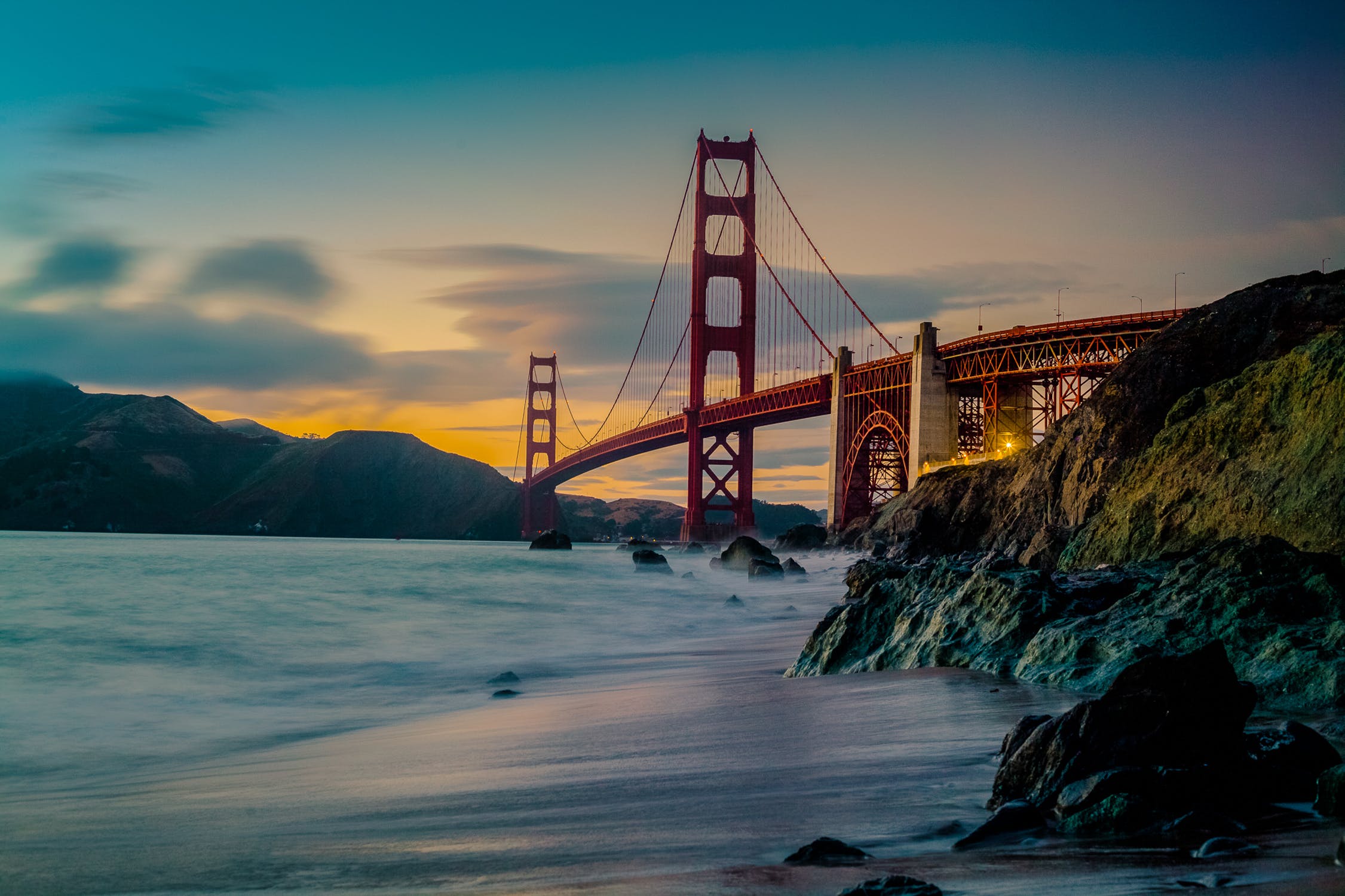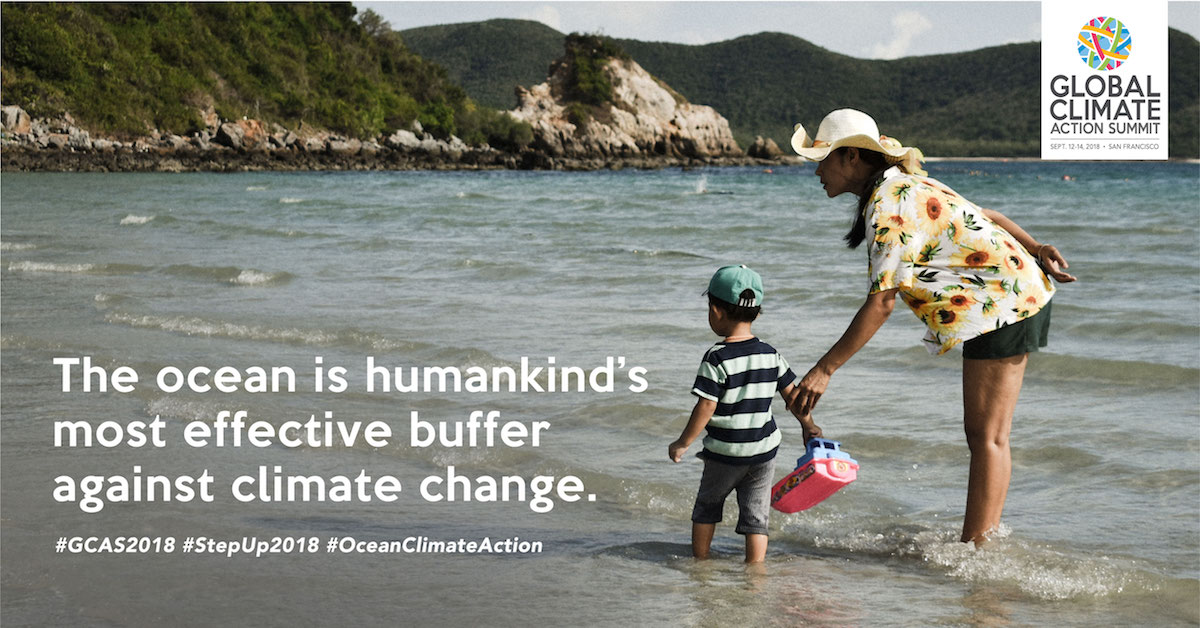What’s Big, Blue and Hiding in Plain Sight?
The ocean–our most effective buffer against climate change

Taking the ocean into account is critical for successfully addressing global climate change. Addressing climate change is likewise critical for the future health of our ocean. The two are inextricably linked.
Decades of research has provided clear evidence of the ocean’s central role in regulating the global climate system and buffering the impacts of climate change. The ocean has already absorbed 90% of the excess heat generated from the emission of greenhouse gases as well as 30% of the CO2 that has been pumped into the atmosphere as a result of our ongoing reliance on fossil fuels. But until recently, climate actions and policies have largely not effectively taken the ocean’s role into account.
That has now begun to change–and Governor Jerry Brown’s Global Climate Action Summit this week in San Francisco may well prove to be a watershed moment for how our ocean is considered in climate policymaking.
As the momentum grows from leaders across the globe to more fully incorporate the ocean into our climate thinking and planning, Governor Brown’s summit couldn’t come at a more opportune time. Largely in response to President Trump’s unwillingness to continue U.S. federal leadership on climate action, California’s Governor is bringing together political leaders, members of the private sector, civil society organizations and inspirational individuals from around the world to create a launching pad for deeper worldwide climate commitments and action.

For the first time at a major climate conference, the ocean will be featured prominently in the agenda. California’s longstanding leadership on ocean and climate issues will be highlighted by John Laird, Secretary for Natural Resources for the state. Former Secretary of State John Kerry and Ocean Conservancy’s CEO Janis Searles Jones are both participating in high-profile panels and discussions on the intersection of ocean health and climate stability. And the International Alliance to Combat Ocean Acidification (OA Alliance) will convene to advance its ongoing effort to enable governments and other leaders to approach international policy discussions on changing ocean conditions with both a shared vision and shared values. As a founding member of the OA Alliance, Ocean Conservancy will be releasing its own OA Action Plan, detailing our institutional commitment to bringing the ocean to the table in climate discussions.
While there is growing momentum to bring the climate and ocean worlds together, there has been little tangible progress to date. The communities are made up of different people who often speak past each other with regard to terminology, goals and desired actions. Climate mitigation and adaptation strategies are often missing specific, actionable ocean-climate solutions that meet the needs of both the climate and the ocean–as well as their respective constituencies. But the Global Climate Action Summit is an opportunity for decision-makers to begin to recognize the pressing need to identify and implement ocean-climate solutions, and to commit to including them as fundamental parts of their strategies to address climate change.
Ocean Conservancy and our partners have been working to lay out the solutions we need to advance this week’s conversation. In collaboration with California’s Ocean Protection Council, Ocean Conservancy and 10 other organizations helped develop the Ocean-Climate Action Agenda as a central framework for this weeks’ conference. Ocean Conservancy has been partnering with international climate negotiation experts at Climate Advisers to provide concrete options for bringing the ocean into UN climate negotiations. Our fishery experts have been calling for the need for domestic fisheries managers to manage differently in response to climate-driven changes in ocean conditions. And our international team is working with countries around the globe who want to include ocean actions in their Nationally Determined Contributions (NDCs) as part of their quest to deliver on the Paris Agreement. Other partners like Center for American Progress are helping implement creative thinking and new ideas in order to move the conversation forward.
This week’s Global Climate Action Summit will draw thousands of people to a jaw-dropping number of affiliate events, many of these ocean-related. It is a time to celebrate the incredible progress that has been made in reducing greenhouse gas emissions, be inspired by the innovation that is leading to new economic opportunities in support of a stable climate, and renew our shared commitment to the well-being of our fellow global citizens.
This is just the beginning and there is much more that needs to be done. This is especially true for our ocean. Ocean Conservancy hopes the Summit results in a strong commitment to accelerated action on the intersection of ocean and climate by cities, states, nations, the private sector and the global citizenry alike. This is Governor Brown’s final climate statement before his successor is elected this November. But this is just the beginning of a movement to ensure our ocean no longer hides in plain sight, but is recognized as the vital, life-giving force that makes this earth our collective home.
A stable climate requires a healthy ocean, and a healthy ocean will help ensure a stable climate. We can’t have one without the other. We need both.